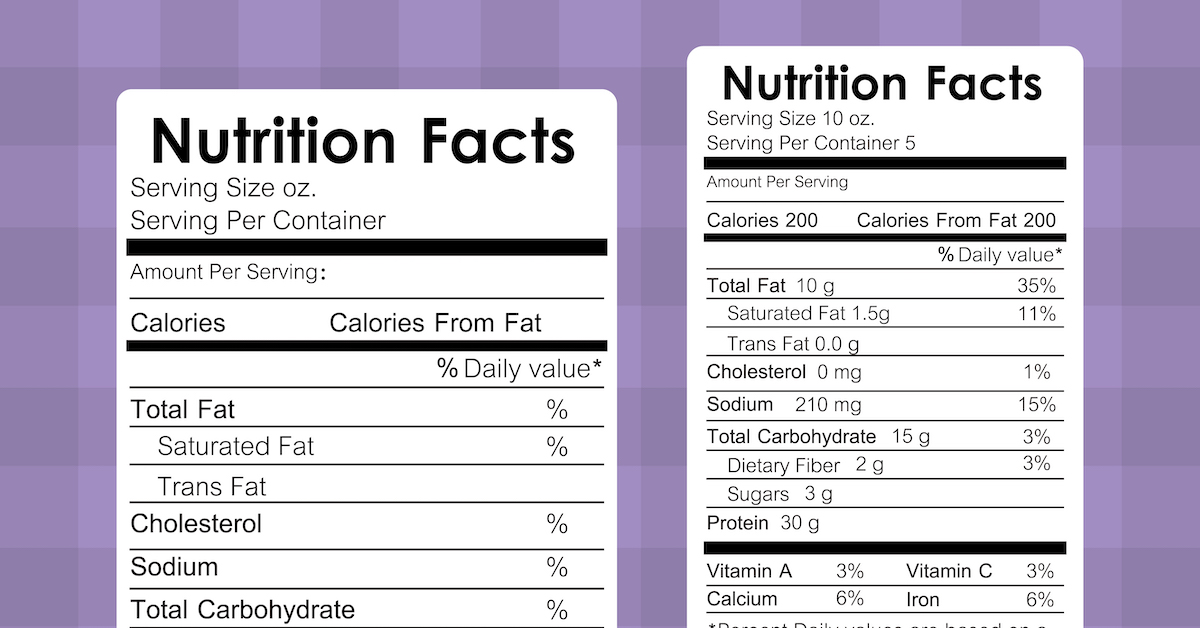Understanding Dog Food Labels
Dog food labels are designed to help pet owners understand what ingredients and nutrients are in a particular pet food.

Good nutrition plays a key role in maintaining your pet’s health. However, achieving the right amount of nourishment can sometimes be tricky. Too much of a good thing can lead to problems like obesity, while diets lacking in certain nutrients can result in deficiencies that impact your pet’s long-term wellness. To maintain optimal health, it’s important to tailor a diet that is appropriate for your pet’s age, breed, weight, and lifestyle. Carefully reading and understanding dog food labels is a great place to start.
Are Dog Food Labels Regulated?
There has been much controversy for decades surrounding the true nutritional value of commercial pet foods like kibble and wet food options. What many pet owners don’t know is that there are several organizations involved in overseeing and regulating the pet food industry, including the ingredients and nutritional information printed on dog food labels.
In the U.S., the Association of American Feed Control Officers (AAFCO) is tasked with developing laws and regulations that dictate how ingredients should be defined, official terminology, the standardized testing of food, and feeding trial protocols. Any false claims, misrepresentations, or deceptive testimonials or endorsements are covered under these laws and regulations.
AAFCO has developed two main nutrient profiles for dog foods: one for growth and reproduction and another for adult maintenance. The biggest difference between the two formulas is that the adult nutrient profile contains lower amounts of nutrients as older dogs tend to require fewer nutrients than puppies and young canines. While dog food is regulated, it is still important to review food labels before making a purchase.
What Ingredients are in Dog Food?
Commercial dog foods found at most supermarkets and feed stores contain a wide range of ingredients, such as:
- Cereals: Basic carbohydrates like rice, grain, beet pulp, and bran
- Fish: Delivers calcium and protein
- Vegetables: Are rich in essential nutrients
- Oils and Fats: Provides dogs with the energy they need to thrive
- Chloride and Sodium: Helps to maintain the balance of body fluids
When shopping for dog food for your pet, there are some ingredients that you want to look for and some you want to avoid. Dogs are omnivores, meaning they eat both plants and animals. Your pet requires access to high-quality protein from suitable meat sources. The ingredients on a dog food label are listed from the highest amount of the ingredient to the lowest amount. Ensure that the food has real meat listed as the first ingredient, such as “salmon” or “chicken.”
The next ingredient on the dog food label should be a meat meal, such as “chicken meal.” Meat meals can help drive up your dog’s protein levels and deliver much-needed energy. Meat meals are necessary as dry dog foods do not contain enough protein from fresh or frozen meats to sustain the animal’s growth. Meat meals have been processed to remove excess moisture and provide more protein per serving.
Whole fruits and vegetables should also be listed on the dog food label. Fruits and veggies are an excellent way for dogs to get the vitamins and minerals they need to maintain good health. When reviewing the dog food label, look for fruits and vegetables that are more nutritionally impactful, such as “carrots” or “sweet potatoes,” instead of fractions that should appear lower on the ingredient list.
Good fats are also essential in dog foods but their origin should be fairly specific. For example, the term “animal fat” can be tricky as the pet owner does not know what type of animal the fat is rendered from. Instead, choose pet foods with labels that clearly indicate the source of the fat, such as “duck fat.” Fat from adequate animal sources can help support moist skin and is essential for brain health.
There are also some ingredients that you want to avoid when looking at dog food labels, such as the following:
- Unidentified meats and/or meat products. These ingredients are often listed as “meat” which can make it difficult to assess the quality.
- Soy meal as the first ingredient. The term ‘soy meal’ often refers to the presence of a genetically modified organism (GMO) product.
- Artificial sweeteners. Dog food should never contain artificial sweeteners which can lead to weight gain and other health problems.
- Artificial flavors and colors. Your pet’s food also does not need artificial flavors or colors as they do not provide any health benefits.
- Artificial hormones. Avoid dog foods that contain artificial hormones and instead choose a product that best mimics a dog’s wild, natural diet.
What are Feeding Guidelines for Dogs?
When reading the label on your dog’s food, you’ll likely come across feeding guidelines. These are general recommendations for feeding your pet a certain food and can be found on both dry kibble and wet dog food varieties. It is important to remember that these feeding guidelines are recommendations only and may not be right for all dogs. Use these guidelines as a starting point and adjust them for your specific pet’s needs.
Feeding your dog too much, too little, or the wrong type of food can result in nutritional deficiencies. Providing your dog with a balanced and nutritionally-sound diet can help support your pet’s overall health and help them to feel their absolute best. If you are unsure about the quality of a particular dog food, consult with your veterinarian about what type of food is best for your furry friend.
Ready to start saving money on pet wellness care?
Then take a look at Mint Wellness, the pet wellness plan that provides fast reimbursement on routine pet care. Save on vaccinations, wellness exams, preventatives, dental, and more!
Learn More


